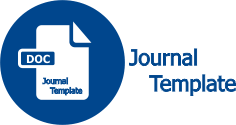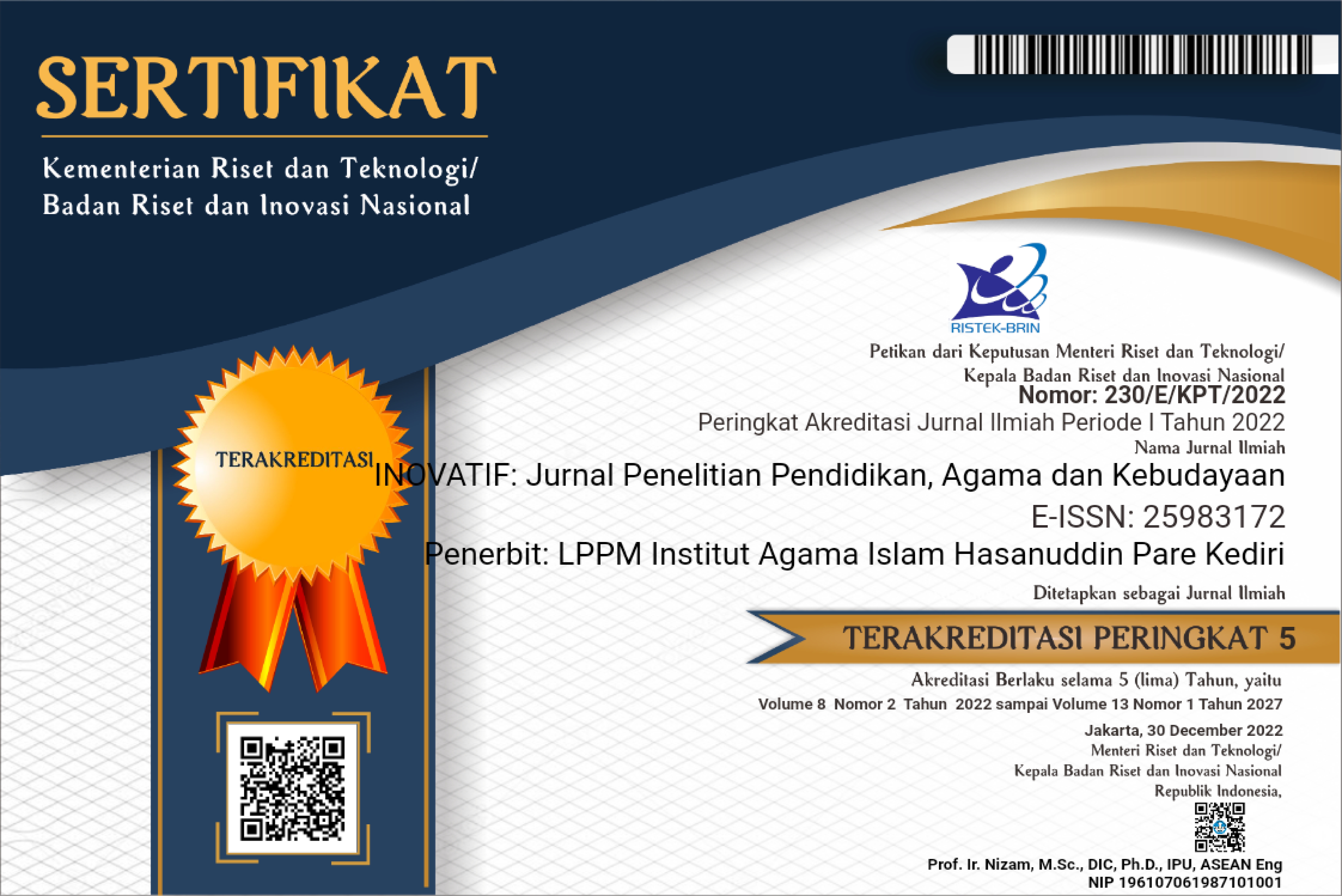Using Zoom Meeting as Learning Medium on Speaking Online Class
DOI:
https://doi.org/10.55148/inovatif.v8i1.271Keywords:
Zoom Meeting, Learning Medium, and Speaking Skill.Abstract
This study was conducted to the problem of using Zoom Meeting as learning medium. This research used descriptive qualitative research design. The population of this research was student of DELTA Education Center. The sample of this research was the student of Speaking Online Class. The research instrument was interview and documentation. The result of the analysis showed Learning English through 1) E-Learning during the Covid-19 pandemic; some of them stated that learning English while at home is quite good even it needs more time to do online. 2) The lesson which is given by PPT, so the students need to prepare it first. They used to study with book, due to pandemic, so they use PPT for their handbook in learning activity. 3) The students need more time to get signal. Because every place has own signal fo having the class. Sometimes they get sufficient signal, suddenly they lose the signal. In the contrary, they lose the signal, but for several minutes they get the signal. 4) The students are from house wives, so they need specific time to study English. It is about 4-5 p.m. every day. 5) The students need to create email, because the learning activity is online. Might as well, they must create email account. 6) To join zoom meeting needs an hour to log in, because they need to connect the signal and waiting from the host.
Downloads
References
Arikunto, S. (1991). Prosedur Penelitian Suatu Pendekatan Praktik. Rineka Cipta.
Azar, B. S. (2002). Understanding and Using English Grammar Third Edition. Pearson Education.
Brown, H. D. (2001). Teaching by Principles: An Interactive Approach to Language Pedagogy, Second Edition. Pearson Education.
Cameron, L. (2001). Teaching Language to Young Lerners. Cambridge University Press.
Canale, M., & Swain, M. (1980). Theoretical bases of communicative approaches to second language teaching and testing. Applied Linguistics, 1(1), 1–47. https://doi.org/10.1093/applin/I.1.1
Carter, R., & Nunan, D. (2001). The Cambridge Guide to Teaching English to Speakers of Other Languages. the press syndicate of the university of cambridge. http://assets.cambridge.org/052180/1273/sample/0521801273ws.pdf
Daryanto. (2010). Media Pembelajaran. Gava Media.
Dinata, N. S. S. (2004). Metodologi Penelitian Pendidikan. Metodologi Penelitian Pendidikan.
Djiwandono, P. I. (2009). Strategi Belajar Bahasa Inggris. PT. Malta Printindo.
Embi, M. (2011). Aplikasi Web 2.0 dalam Pengajaran dan Pembelajaran. Universiti Kebangsaan Selangor.
Frank, M. (1972). Modern English: A Practical Reference Guide. Pentice- Hall,Inc.
Fromkin, V., Rodman, R., & Hyams, N. (2003). An Introduction to Language sevent edition. Wadsworth. http://www.wjh.harvard.edu/~pal/pdfs/pdfs/7th.pdf
Haqien, D., & Rahman, A. A. (2020). Pemanfaatan Zoom Meeting untuk Proses Pembelajaran pada Masa Pandemi Covid-19. SAP (Susunan Artikel Pendidikan), 5(1), 51–56. https://doi.org/10.30998/sap.v5i1.6511
Harmer, J. (1991). The Practice of English Language Teaching. Longman Group UK Limited.
Harris, D. (2010). Presentation Software: Pedagogical Costrains and Potential. University College Plymouth. http://www.heacademy.ac.uk./
Indriana, D. (2011). Ragam Alat Bantu Media Pengajaran. Gramedia.
Jones, D. (1956). The Pronunciation of English. University Press.
Kelly, G. (2000). How to Teach Pronunciation. Pearson Education Limited.
Moleong, L. J. (2005). Metodologi Penelitian Kualitatif. PT Remaja Rosda Karya.
Morley, J. (1991). The Pronunciation Component in Teaching English to Speakers of Other Languages. TESOL Quarterly, 25(3), 481–520. https://doi.org/https://doi.org/10.2307/3586981
Mulyani, S. (2020). Students’ Perception and Motivation Toward English E-Learning During Covid-19 Pandemic (a Study At the Tenth Graders At Sma N 1 Suruh in the Academic Year of 2019/2020). State Institute For Islamic Studies (IAIN).
Nicole, L. W. (2011). Prezi V. Powerpoint: Finding the Right Tool for the Job. State University of New York Institute of Technology. https://www.docushare.sunyit.edu//dsweb/Get/white_Thesisproject2.pdf//
Prastowo, A. (2014). Metode Penelitian Kualitatif dalam Perspektif Rancangan Penelitian. Ar-Ruzz Media.
Purpura, J. E. (2004). Assessing Grammar. Cambridge University Press.
Read, J. (2000). Assessing Vocabulary. Cambridge University Press.
Rodgers, J. C. R. and T. S. (2001). Approaches and Methods in Language Teaching: A Description and Analysis. Cambridge University Press.
Rosyid, N. M., Thohari, I., & Lismanda, Y. F. (2020). Penggunaan Aplikasi Zoom Cloud Meetings Dalam Kuliah Statistik Pendidikan di Fakultas Agama Islam Universitas Islam Malang. Jurnal Pendidikan Islam, 5(11), 47–52.
Saputra, I. P. W. (2011). Prezi the Zooming Presentation. Elex Media.
Shaw, C. and M. (2001). Materials and Methods in ELT- A Teacher’s Guide. Cambridge University Press.
Sugiyono. (2010). Metode Penelitian Pendidikan. Alfa Beta.
Sugiyono. (2014). Metode Penelitian Kuantitatif Kualitatif dan R & D. Alfabeta CV.
Sutrisno. (2011). Pengantar Pembelajaran Inovatif Berbasis TIK. Persada Press.
Thornbury, S. (2005). How to Teach Speaking. Longman.
Yule, G. (2010). The Study of Language: An Introduction (4th ed.). Cambridge University.
Downloads
Published
How to Cite
Issue
Section
License
Please read Copyright Notice for Inovatif: Journal of Research on Religious Education and Culture









